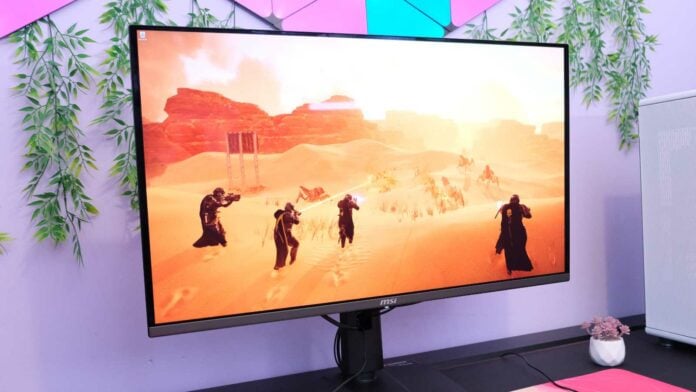Club386 endorses products based on our extensive tests and experience. If you make a purchase using our referral links, we may get a small commission at no extra cost to you.
If you’re in the market for the best gaming monitor in 2024, we’re here to help. We’ve had our hands on many budget, mid-range, and top-end models over the years, and some stand out above all others. There are more options than ever for affordable 4K displays, lightning-fast QHD panels, and leading 1080p screens geared towards an esports audience. No matter your budget or preference, below you’ll find an excellent unit that will last you many years to come.
While resolution and refresh rate are crucial factors, another aspect to consider when choosing a new gaming monitor is the panel type. In recent years, we’ve seen a shift towards OLED technology, which features self-emitting pixels, meaning true black and seemingly endless colour contrast. However, these displays typically come with a premium price tag. Cheaper displays may use a more conventional backlit LCD panel, with common types being VA (vertical alignment) and IPS (in-plane switching).
Then, we get to the size and form factor. Traditional sizes for gaming include 27 inches and 32 inches in a 16:9 aspect ratio. However, you may be more inclined towards a larger (and wider) 21:9 ultrawide or 32:9 super ultrawide gaming monitor. Many new releases support these two aspect ratios as standard in 2024, and they can provide a more immersive experience for both work and play. With the preamble out of the way, these are the best gaming monitors.
At a glance
1. MSI MPG 321URX QD-OLED – Best gaming monitor
2. iiyama G-Master G2755HSU-B1 – Best budget gaming monitor
3. Gigabyte Aorus CO49DQ – Best super ultrawide gaming monitor
4. MSI MEG 342C QD-OLED – Best ultrawide gaming monitor
5. MSI Optix MPG321QRF-QD – Best mid-range gaming monitor
6. Philips Evnia 34M2C7600MV – Best mini-LED gaming monitor
7. Alienware AW2524HF – Best esports gaming monitor
8. AOC Agon Pro AG324UX – Best monitor for work and play
The best gaming monitors in 2024
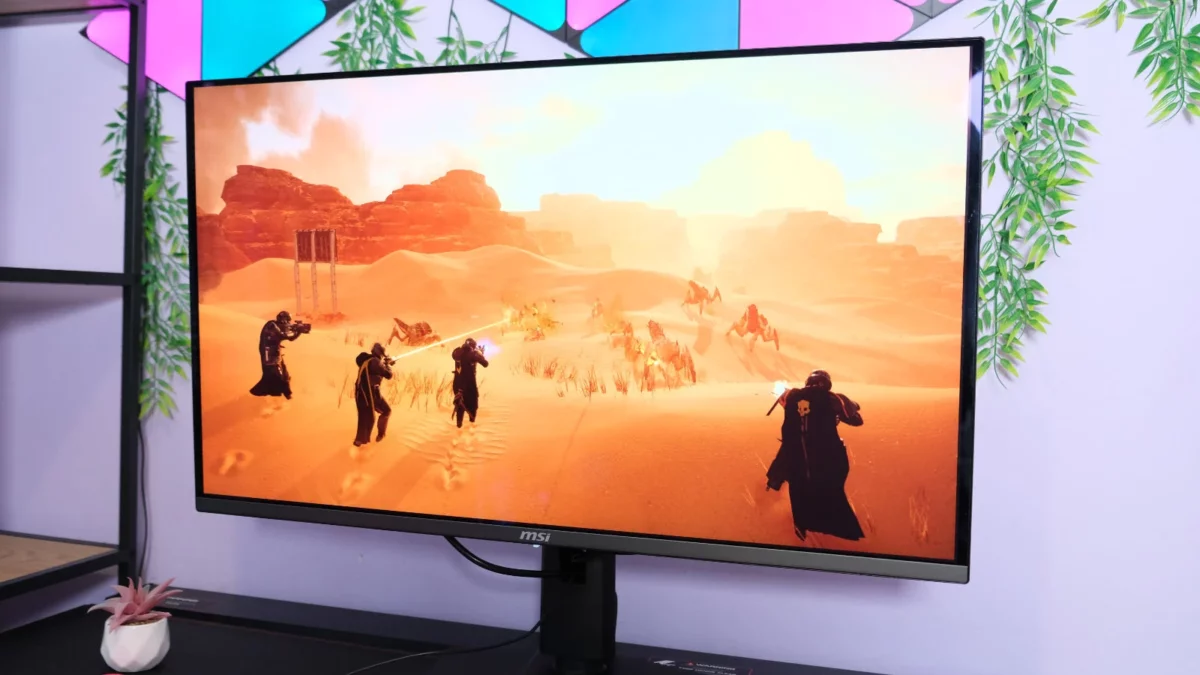
1. MSI MPG 321URX QD-OLED
The best gaming monitor on the market – for a price.
| Specs | |
|---|---|
| Resolution | 4K (3840 x 2160) |
| Panel size | 32 inch |
| Panel type | QD-OLED |
| Response time | 0.03 ms (GtG) |
| Typical brightness | 244cd/m² |
| Features | HDR 400, Adaptive Sync |
| Connectivity | HDMI | DisplayPort | USB-C |
| RRP / MSRP | £1,299 / $950 |
MSI MPG 321URX QD-OLED takes the top spot for the best gaming monitor available in 2024, and we haven’t made this decision lightly. This leading display features a stunning OLED 4K resolution complete with a silky smooth 240Hz refresh rate, perfectly melding fidelity and performance all in one package. However, it doesn’t come cheap, with those in North America getting the better deal at $950 compared to the UK’s RRP of £1,299.
While MSI MPG 321URX QD-OLED is far from a budget gaming monitor, there’s no faulting just how powerful the display can be. Our testing reveals incredible colour calibration and colour accuracy, which made this display a joy to game on. Of course, you’ll need one of the best graphics cards to really take advantage of its capabilities. Even with the likes of an RTX 4090 and DLSS 3’s Frame Generation in effect, many modern games will struggle to hit the refresh rate cap. With that said, it’s future-proofed for many years to come.
Competitive gamers will no doubt love the leading 0.03ms response time, offering near-instant reactions from the panel. It’s not even blink-and-you’ll-miss-it; it’s seamless even when you’re staring intently. If you’re someone who plays a lot of Overwatch 2, The Finals, CS2, Fortnite, and other reaction-based games, then there’s no better screen on the market with such a high refresh rate and resolution. Don’t sweat not seeing the AMD FreeSync Premium Pro or Nvidia G-Sync branding, either. It does support VRR (variable refresh rate), even without specific certification.
Aside from the steep pricing, the only real negative we can draw is that MSI MPG 321URX QD-OLED is an absolute fingerprint magnet, it has a cheaper plastic stand, and its indented VESA mount is less than desirable, preventing it from attaining a perfect score. With all said, MSI’s latest is a triumph, and those after the best of both worlds with the cash to spend won’t find anything better.
Read our full MSI MPG 321URX QD-OLED review for our extended thoughts.
Pros
4K/240Hz combo
Colour accuracy
Robust OLED Care
Three-year warranty
Great US price
Cons
Cheap plastic stand
Slightly lower gamut
Fiddly VESA mount
Fingerprint magnet
Buy
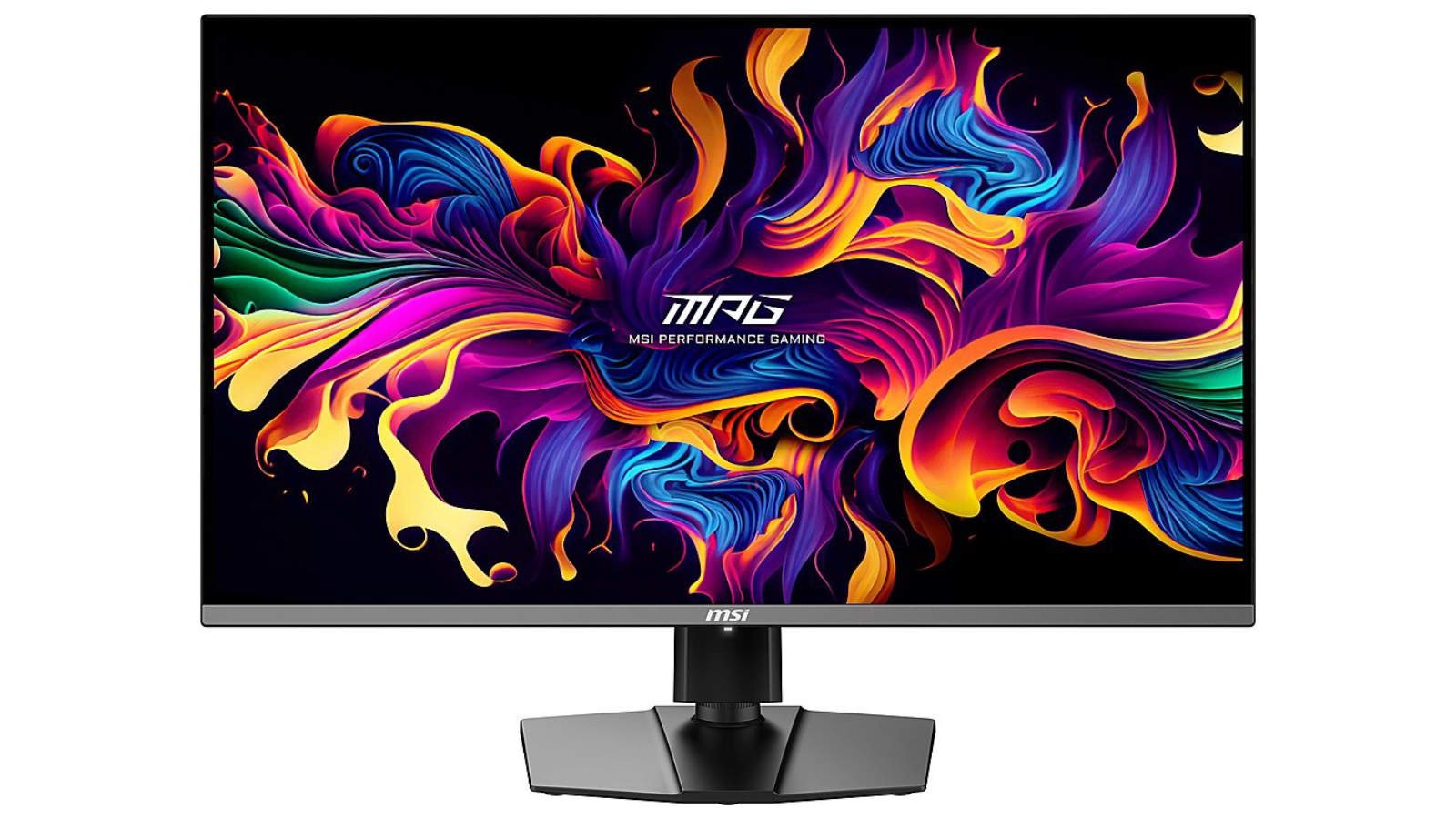
Club386 may earn an affiliate commission when you purchase products through links on our site. This helps keep our content free for all.
Rest assured, our buying advice will forever remain impartial and unbiased.
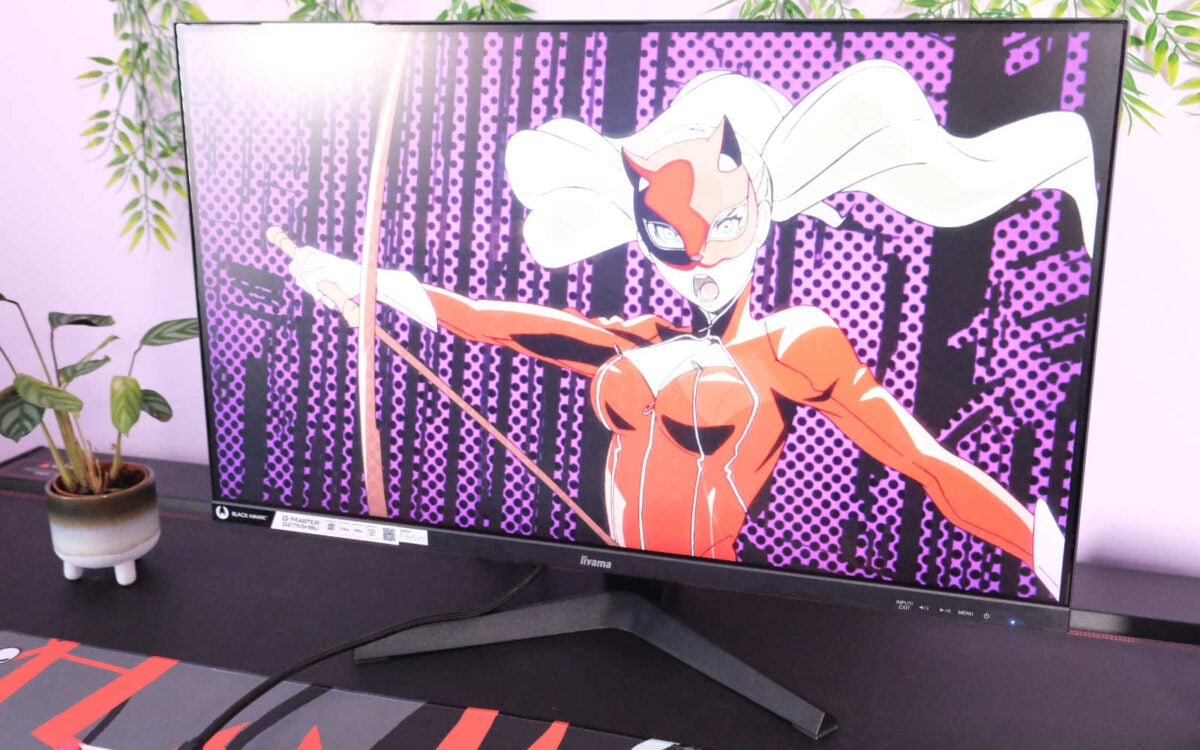
2. iiyama G-Master G2755HSU-B1
The best budget gaming monitor.
| Specs | |
|---|---|
| Resolution | Full HD (1920 x 1080p) |
| Panel size | 27 inch |
| Panel type | VA |
| Response time | 1ms |
| Typical brightness | 265cd/m² |
| Features | Adaptive Sync, USB Hub |
| Connectivity | HDMI | DisplayPort |
| RRP | £115 |
If you’re on a particularly tight budget but still want a solid gaming experience, then we can wholeheartedly recommend iiyama G-Master G2755HSU-B1 for its excellent price-to-performance ratio. At just £115, there’s little more that you can want from a 1080p VA panel that confidently punches above its weight when compared to the competition. While iiyama may not be a household name, we think the G-Master G2755HSU-B1 outshines just about all others from a value standpoint.
It features a 1ms response time combined with a 100Hz refresh rate, which is certainly uncommon at sub-£150. Typically, you’re lucky just to get Full HD at 60Hz, but you’re pushing up an extra 40% here. While it may not sound like a massive difference on paper, that extra bump goes a long way to making everything feel smoother in action, shooter, and racing games especially where every frame matters.
Design-wise, the G-Master G2755HSU-B1 is about as no-frills as it gets. You won’t find anything flashy about its aesthetic but all the necessary connectivity options are present and accounted for. That means HDMI 1.4, DisplayPort 1.2, and USB-B as standard. While not the flashiest ports, they each get the job done and are compatible with most devices.
Considering its wallet-friendly pricing, you won’t be shocked to hear that iiyama G-Master G2755HSU-B1 isn’t exactly a leader when it comes to its colour vibrancy and panel type, but the results are respectable. In our testing, we found that this panel had a remarkable colour contrast ratio for the money, even though it never got too bright. It peaks at 250 nits, which should be enough for most people in darker-lit rooms but may be washed out in particularly bright environments.
Read our full iiyama G-Master G2755HSU-B1 review for the low down.
Pros
100Hz done cheap
Amazing contrast ratio
x2 USB hub
Extremely efficient
Cons
Lacking colours
Short and non-adjustable
No cable management
Buy
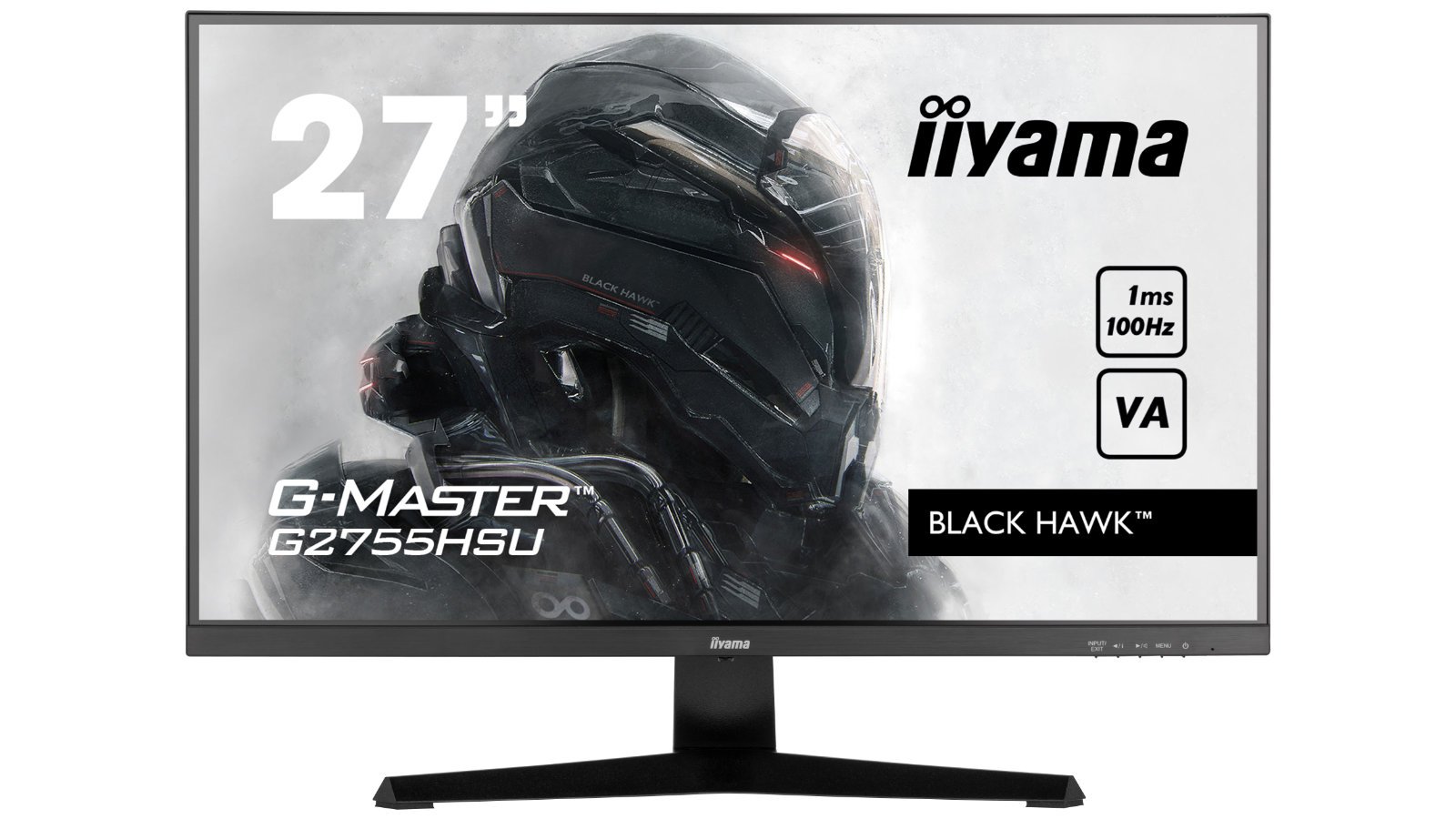
Club386 may earn an affiliate commission when you purchase products through links on our site. This helps keep our content free for all.
Rest assured, our buying advice will forever remain impartial and unbiased.
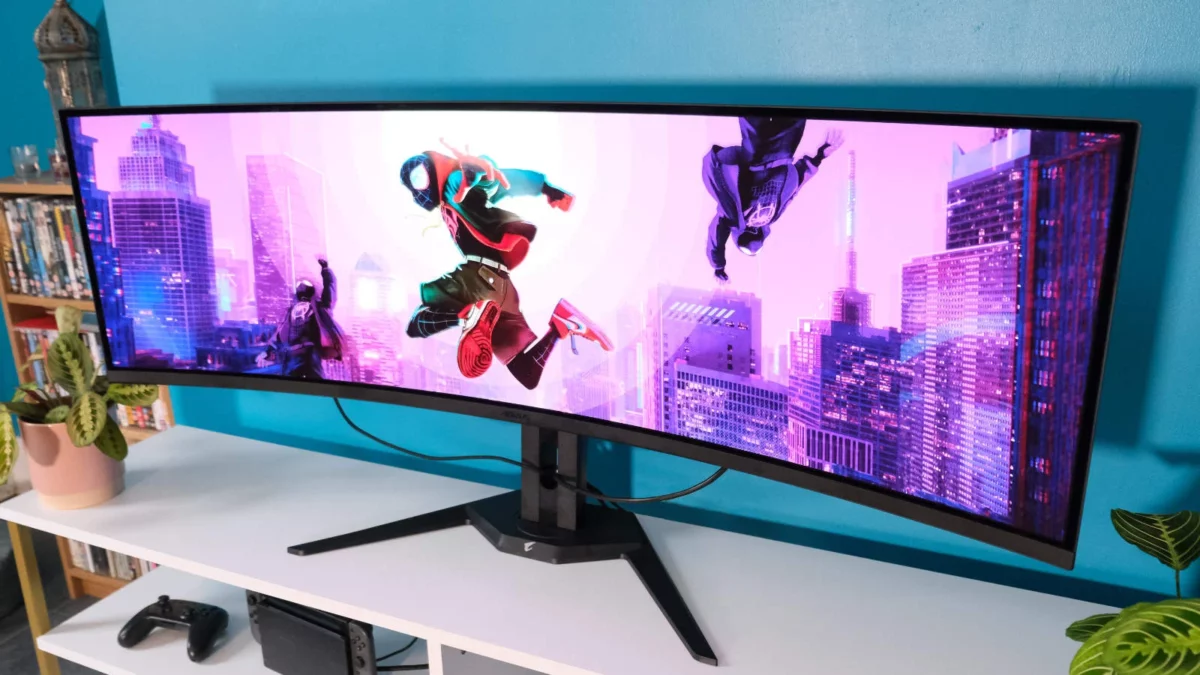
3. Gigabyte Aorus CO49DQ
The best super ultrawide gaming monitor.
| Specs | |
|---|---|
| Resolution | DQHD (5120 x 1440p) |
| Panel size | 49 inch |
| Panel type | QD-OLED |
| Response time | 0.03 ms (GtG) |
| Typical brightness | 265cd/m² |
| Features | HDR TrueBlack 400, AMD FreeSync Premium Pro |
| Connectivity | HDMI | DisplayPort | USB-C |
| RRP / MSRP | £1,199.99 / $1,099.99 |
If you’re someone who wants all the benefits of a dual monitor gaming setup with none of the annoying bezels, then you’re going to love what Gigabyte Aorus CO49DQ can do. It features an excellent OLED panel with its 5120x1440p resolution and a lightning-fast refresh rate of 144Hz. Even mid-range AMD and Nvidia graphics cards can max refresh rate and resolution. While £1,199.99 / $1,099.99 is far from cheap, it undercuts many of its competitors at this spec. Besides, it’s essentially two monitors rolled into one.
Gigabyte Aorus CO49DQ features a leading 0.03ms response time thanks to its QD-OLED panel technology across its super ultrawide form factor, which is uncommon at its price range. That means competitive gaming is certainly viable for added immersion, and many modern games now support 32:9 as standard. This monitor is further bolstered by AMD FreeSync Premium Pro and VRR, which effectively eliminates all screen tearing for uninterrupted, smooth gameplay.
In terms of design, the 1800R curve is far from the most aggressive on the market and the more gentle approach works given the CO49DQ’s 49-inch width. It’s truly immersive at a standard viewing distance. In our testing, we found that games such as Rainbow Six Siege really shine at adding additional peripheral vision, so you should be well-equipped when running other competitive shooters, too.
It’s not an issue that’s unique to the Gigabyte Aorus CO49DQ, but do note some older games simply don’t support 32:9 as standard and may require modding to get right. Pre-rendered cutscenes in most games, even modern titles, usually default to 16:9, which can be jarring. If you’re solely interested in older titles, they may only run in 16:9 or 21:9, meaning black bars on the sides. The deep blacks of the OLED tech should mean it’s less of a distraction for you, but it’s something to keep in mind all the same.
Read the full Gigabyte Aorus CO49DQ review to learn more.
Pros
Productivity powerhouse
Brilliant colour gamut
Multi PC Pic-in-Pic
Great uniformity
Cons
Messy cable management
Fingerprint magnet
Wonky 32:9 game support
Buy
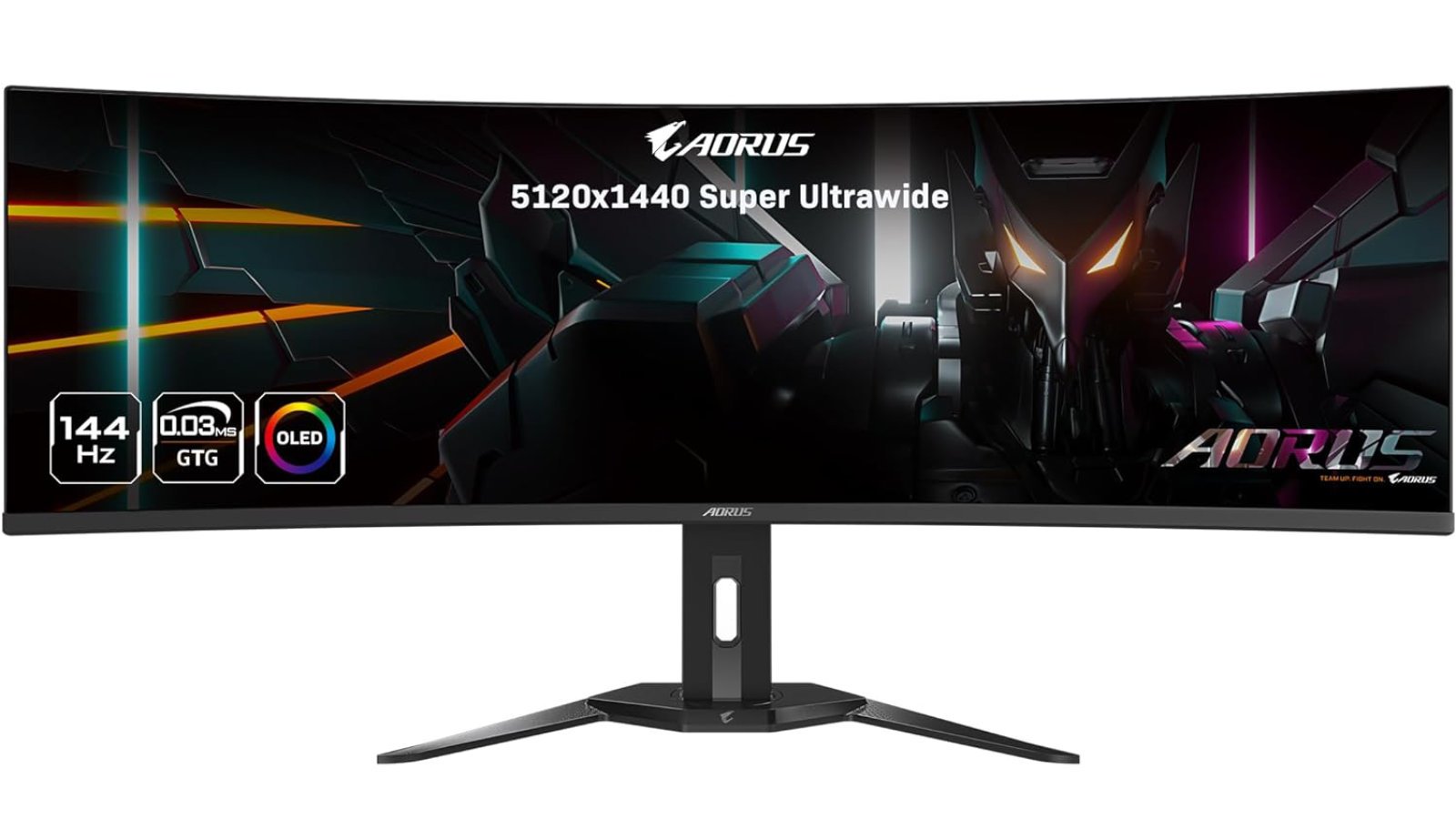
Club386 may earn an affiliate commission when you purchase products through links on our site. This helps keep our content free for all.
Rest assured, our buying advice will forever remain impartial and unbiased.
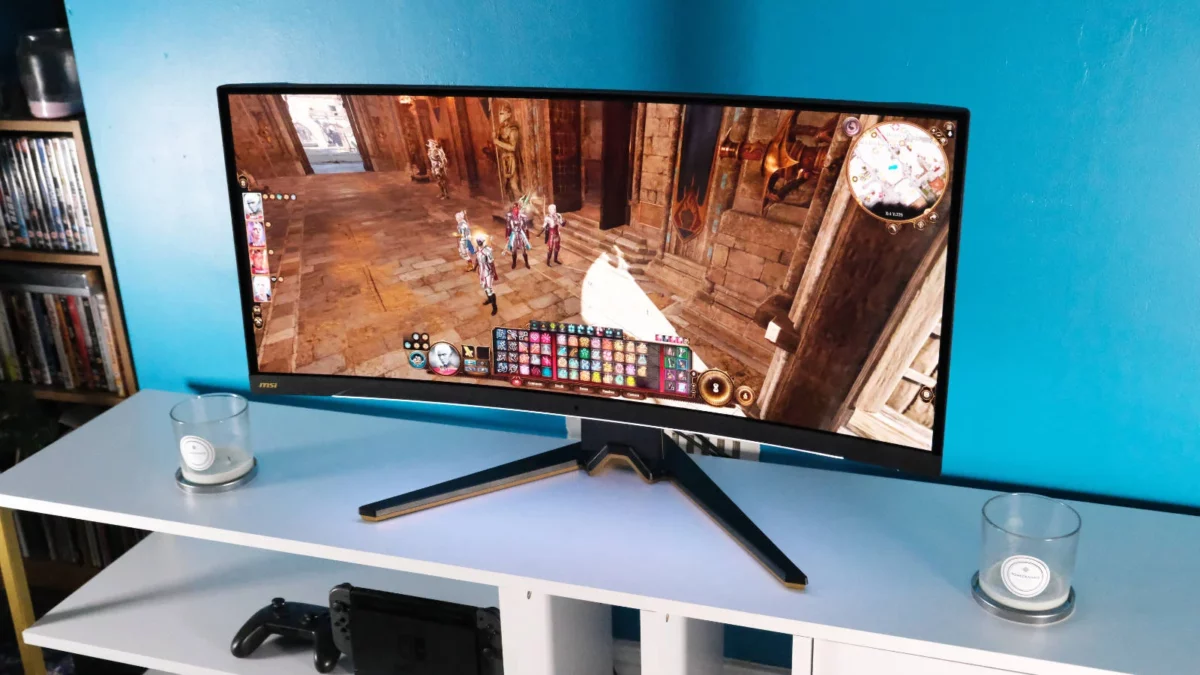
4. MSI MEG 342C QD-OLED
The best ultrawide gaming monitor
| Specs | |
|---|---|
| Resolution | UWQHD (3440 x 1440p) |
| Panel size | 34 inch |
| Panel type | QD-OLED |
| Response time | 0.03 ms (GtG) |
| Typical brightness | 247cd/m² |
| Features | HDR TrueBlack 400, RGB |
| Connectivity | HDMI | DisplayPort | USB-C | Upstream | USB-A |
| RRP / MSRP | £899 / $950 |
MSI MEG 342C QD-OLED is about as close to perfect as you can get for an ultrawide gaming monitor, and it’s been made an even stronger option thanks to a recent price cut. You can now find this display for £899 / $950, which is incredibly competitive given the value for money here with the 175Hz refresh rate and 1440p resolution coupled with the OLED panel tech.
In our testing, we found that the MSI MEG 342C QD-OLED offered leading colour accuracy, perfect blacks, and outstanding contrast. It even excels at uniformity, which is always tougher for ultrawides given the width. It’s a hard gaming monitor to beat, especially at under £900 / £1,000. We noted great results in Baldur’s Gate 3, and the vast majority of new titles nowadays support native 21:9 more consistently than 38:9 so this could be the better pick of the two form factors especially if you want to play older games, too.
There’s also little that we can fault the physical design of the MSI MEG 342C QD-OLED, with its 34-inch display and thin bezels. We did note that the stand is a little larger than some of its competition but that’s less of an issue if you have a sizable gaming desk. Should space be an issue, then you can VESA mount on a dedicated monitor arm; just make sure it can take the weight of it, first.
Connectivity-wise, MSI’s gaming monitor impresses with dual HDMI 2.1, a single DisplayPort 1.4a port, USB-C, Upstream power delivery, and two USB 3.0 ports. You should be well connected when hooking up to your gaming PC with peripherals able to run through the hardware. All in all, the MEG 324C QD-OLED is excellent and should keep current for many years to come.
Read our full five-star MSI MEG 342C QD-OLED review for a deeper insight.
Pros
Fantastic colour accuracy
Perfect blacks
Great contrast
Super uniformity
Broad connectivity
Robust features, RGB
Cons
Chonky stand
Lower brightness
Risk of burn-in
Buy
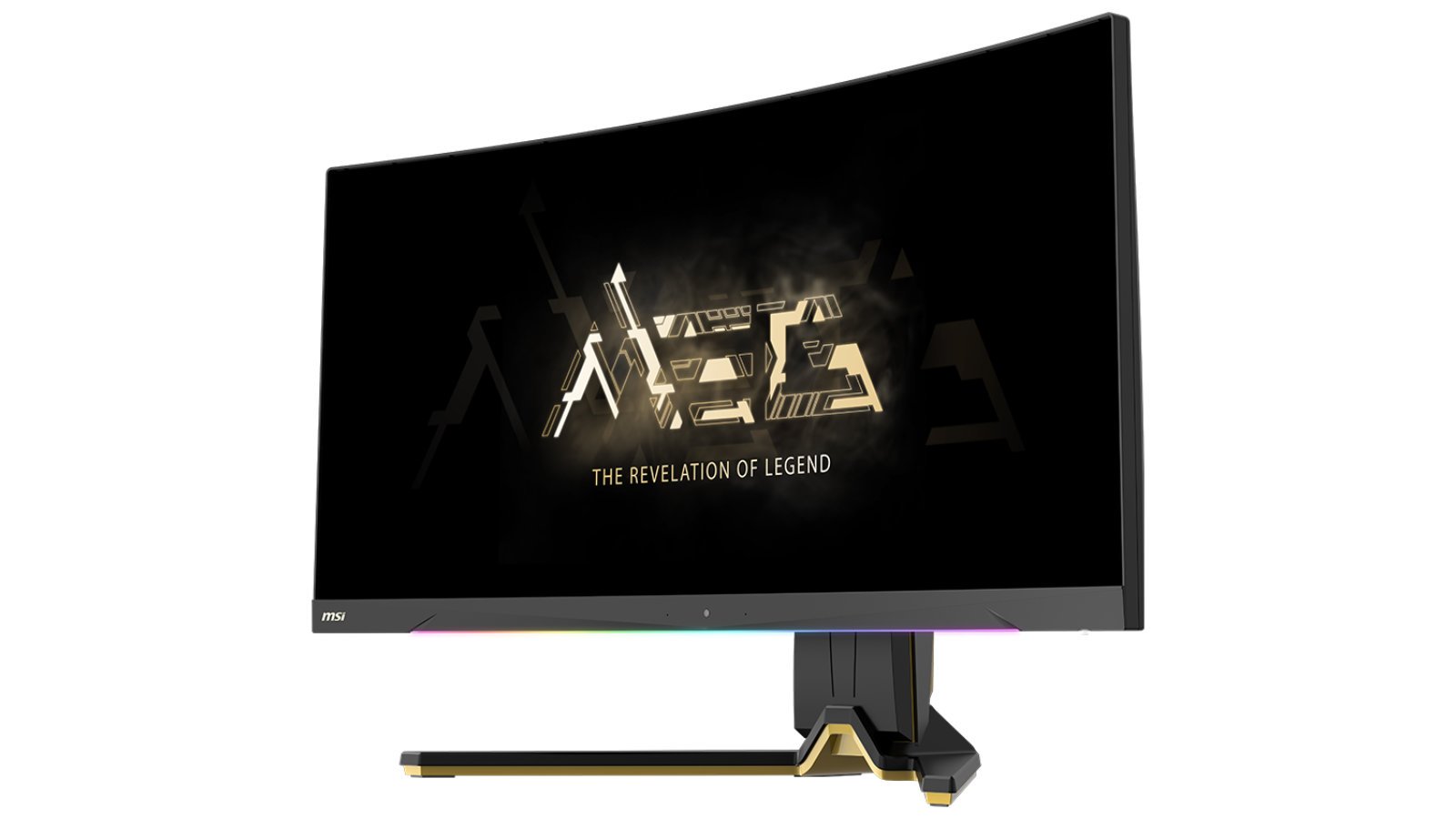
Club386 may earn an affiliate commission when you purchase products through links on our site. This helps keep our content free for all.
Rest assured, our buying advice will forever remain impartial and unbiased.
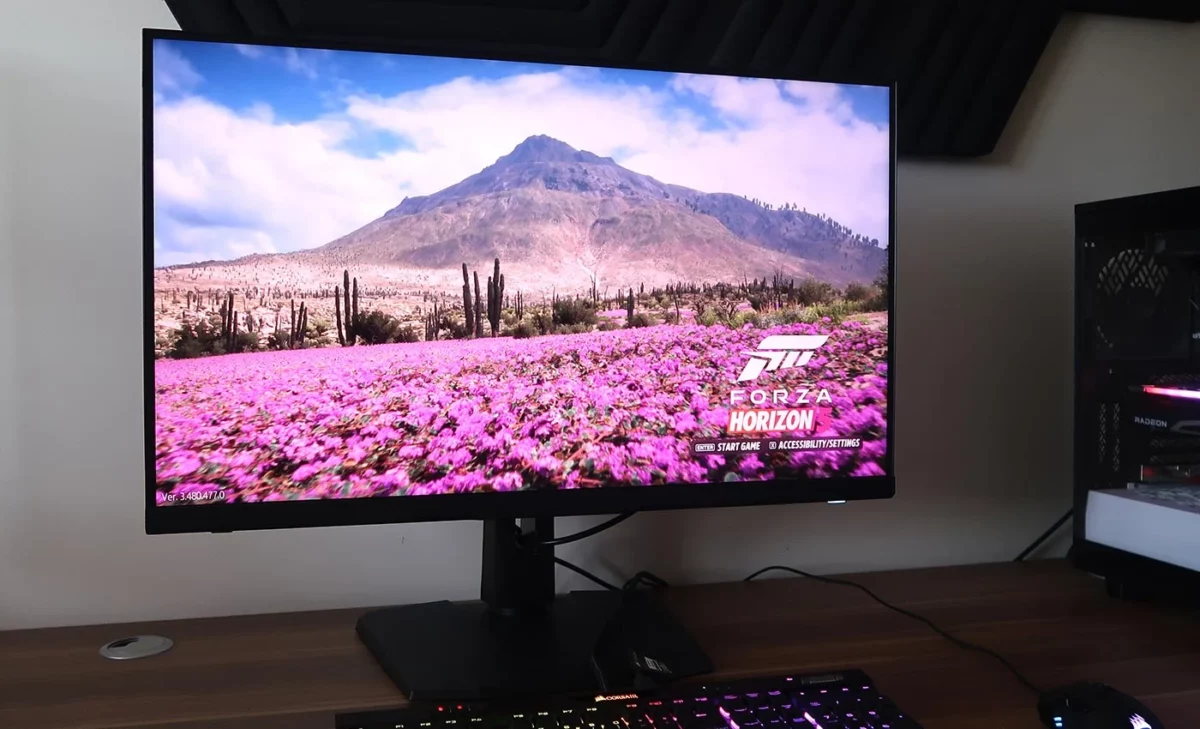
5. MSI Optix MPG321QRF-QD
The best mid-range gaming monitor.
| Specs | |
|---|---|
| Resolution | QHD (2560 x 1440p) |
| Panel size | 34 inch |
| Panel type | QD IPS LCD |
| Response time | 1ms (GtG) |
| Typical brightness | 407cd/m² |
| Features | DisplayHDR600 |
| Connectivity | HDMI | DisplayPort | USB-C | USB 3.2 |
| RRP / MSRP | £399 |
There’s no reason why a sharp-looking gaming monitor necessarily needs to cost the earth and that’s the situation with the MSI Optix MPG321QRF-QD. For just £399, you’re getting a 165Hz refresh rate (or 170Hz when overclocked) 1440p display that punches well above its weight. It benefits from stunning colour reproduction which is further bolstered by Quantum Dot. In fact, Samsung’s QD tech is rarely seen at the £400 price point, making this one a strong suggestion for your setup on a budget.
In our testing we found that the MSI Optix MPG321QRF-QD excelled in vibrant games with its vivid (if not always entirely natural) colour pop which was especially noticable in games like Forza Horizon 5 and Halo Infinite. On the opposite end of the spectrum, however, the black levels aren’t quite as strong with backlight bleed and blooming coming through on occasion. The Quantum Dot layer goes a long way to minimising things but it’s still present, which is where its aggressive price tag comes into play.
That doesn’t take away from one of the nicer gaming monitors that you’ll find for the price point, though. The panel’s built-in software is easy to use and offers a thorough suite of options where you can overclock the refresh rate, switch between HDR modes, and engage the MPRT. There’s no local dimming to speak of as you’ll find from Mini LED or OLED (which pixels can turn themselves off) but things look solid across the board.
Read our full five-star MSI Optix MPG321QRF-QD review for our extended thoughts.
Pros
A good deal at £399
Great gaming experience
Large 32in form factor
QHD and 175Hz sync
Useful desktop app
Versatile stand
Built-in KVM
Cons
Basic contrast
Plasticky build
USB-C only 15W
Buy
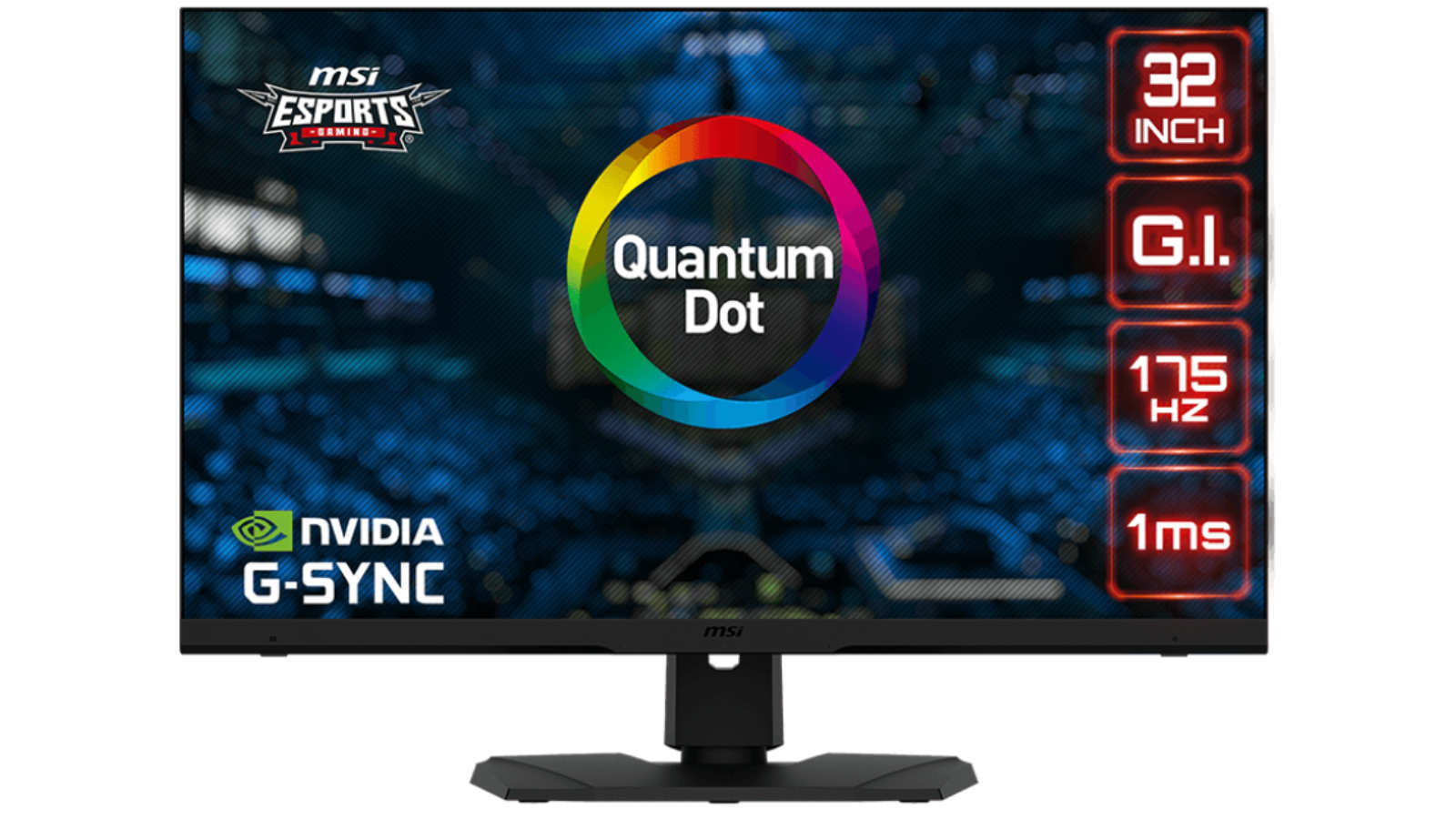
Club386 may earn an affiliate commission when you purchase products through links on our site. This helps keep our content free for all.
Rest assured, our buying advice will forever remain impartial and unbiased.
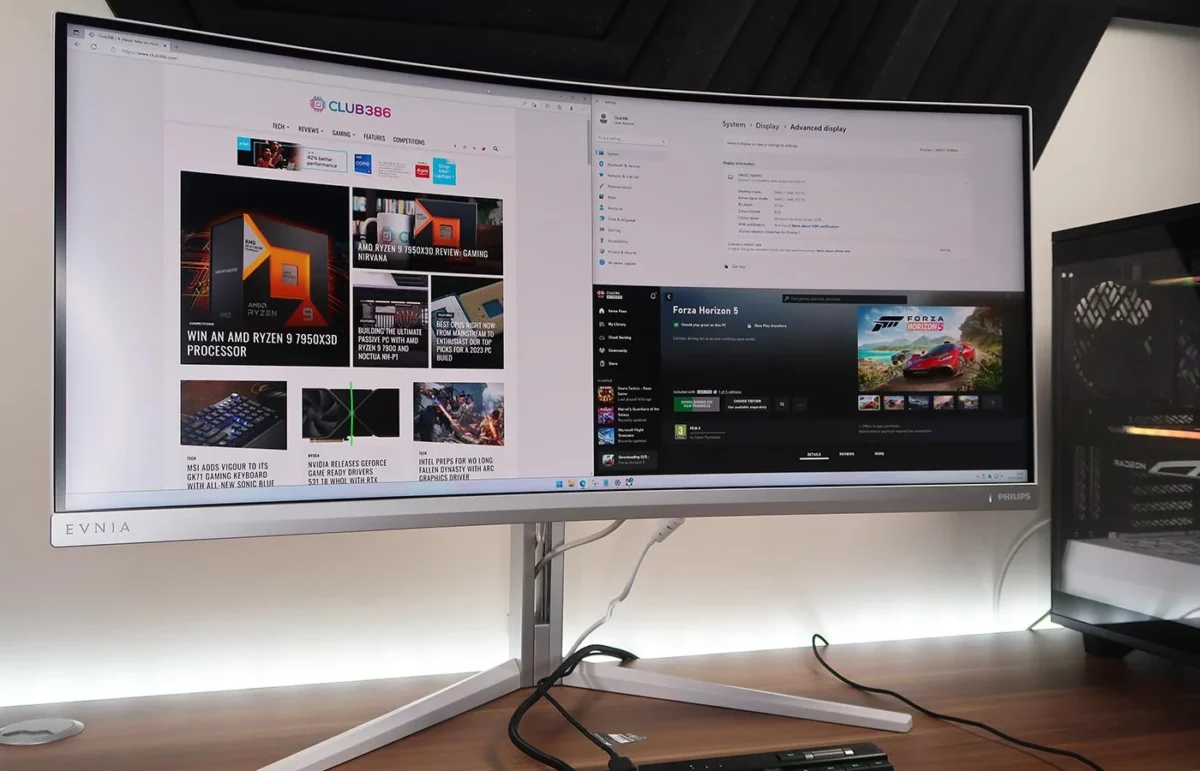
6. Philips Evnia 34M2C7600MV
The best Mini LED gaming monitor.
| Specs | |
|---|---|
| Resolution | WQHD (3440 x 1440p) |
| Panel size | 34 inch |
| Panel type | LED VA LCD |
| Response time | 2.5ms (GtG) |
| Typical brightness | 777cd/m² |
| Features | DisplayHDR1400, 1,152 local dimming zones, Amiglow, KVM switch |
| Connectivity | HDMI | DisplayPort | USB-C | USB 3.2 | Upstream |
| RRP / MSRP | £1,600 |
For as much as we love the deep inky blacks and vivid colours of an OLED monitor, there’s something to be said for the elegant Mini LED panel at the heart of Philips Evnia 34M2C7600MV. The flagship of the company’s Evnia lineup boasts a far brighter display (for enhanced HDR) over what you’ll find from the typical 1,000nit brightness from even leading models running self-lit hardware, but it does come at a price.
That’s because the Philips Evnia 34M2C7600MV debuted at £1,600 making it one of the most expensive monitors on our list. However, you can now find it substantially cheaper than this. Retailers such as Amazon currently show it’s around the £800 mark, making it far more viable than it was at release. This gaming monitor features an exceptional brightness of 1,400nits, which is a good 40% brighter than what we see from OLED alternatives. Combine this with 1,152 local dimming zones and it has all the makings of a stellar screen for gaming and media playback.
We found that this Phillip’s monitor excelled particularly strongly with HDR enabled playing titles such as Cyberpunk 2077 and Forza Horizon 5 where the colours and deep, dark blacks really popped. At RRP this monitor is certainly a harder sell when stacked up directly against an OLED alternative, however, should you find it discounted through major retailers then it’s well worth considering investing in. If you’re looking for something seriously bright and fast then the 34M2C7600MV delivers in the most crucial areas.
If this doesn’t quite tick all the boxes for you, its 34M2C8600 successor is also worth considering with a great deal bringing it down to a similar price.
Read our full Philips Evnia 34M2C7600MV review for our full opinion.
Pros
Looks great
Ultra-bright HDR
165Hz adaptive sync
Integrated KVM
Decent speakers
Cons
Pricey
Motion blur
HDR preset needs work
Buy
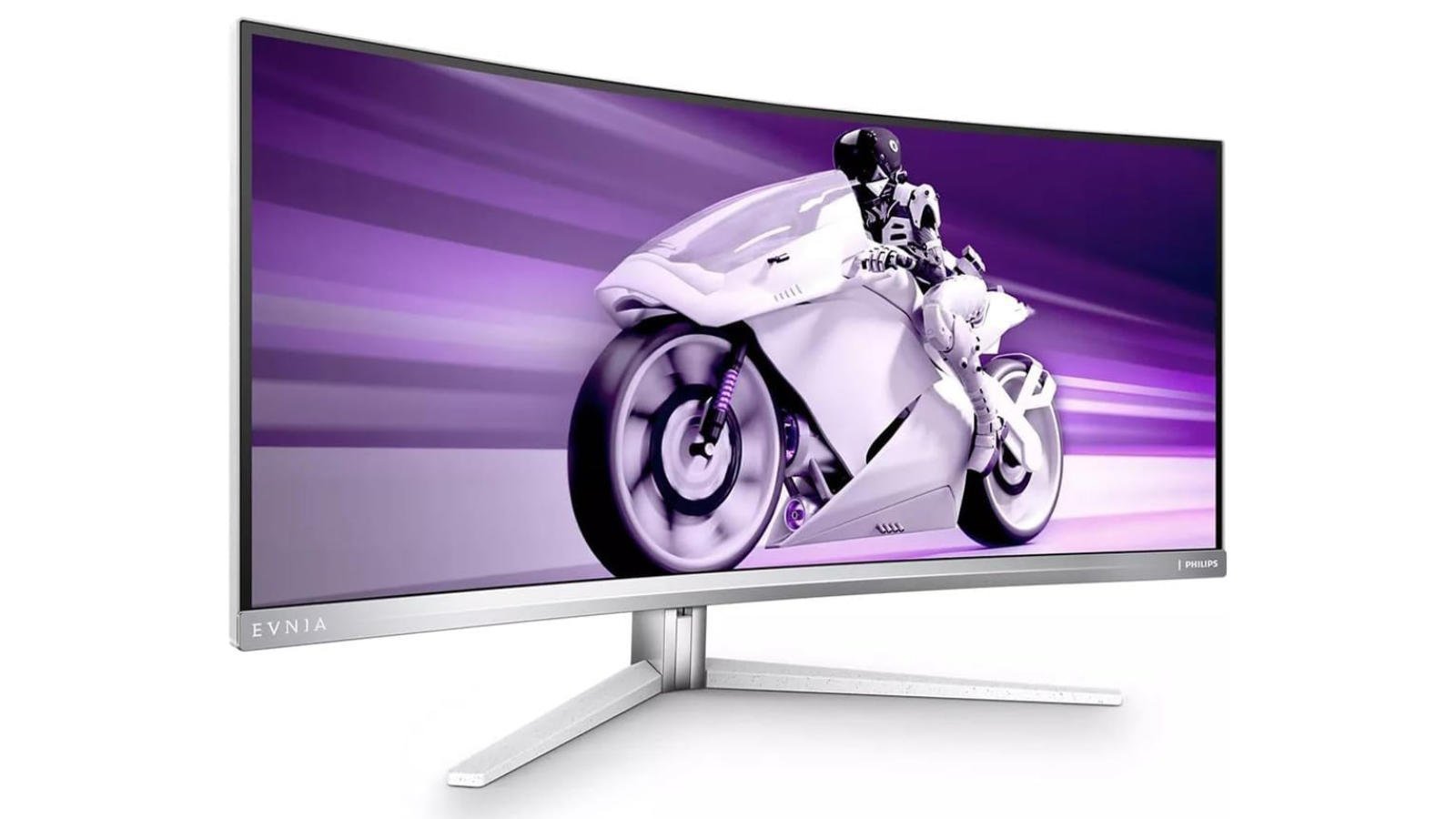
Club386 may earn an affiliate commission when you purchase products through links on our site. This helps keep our content free for
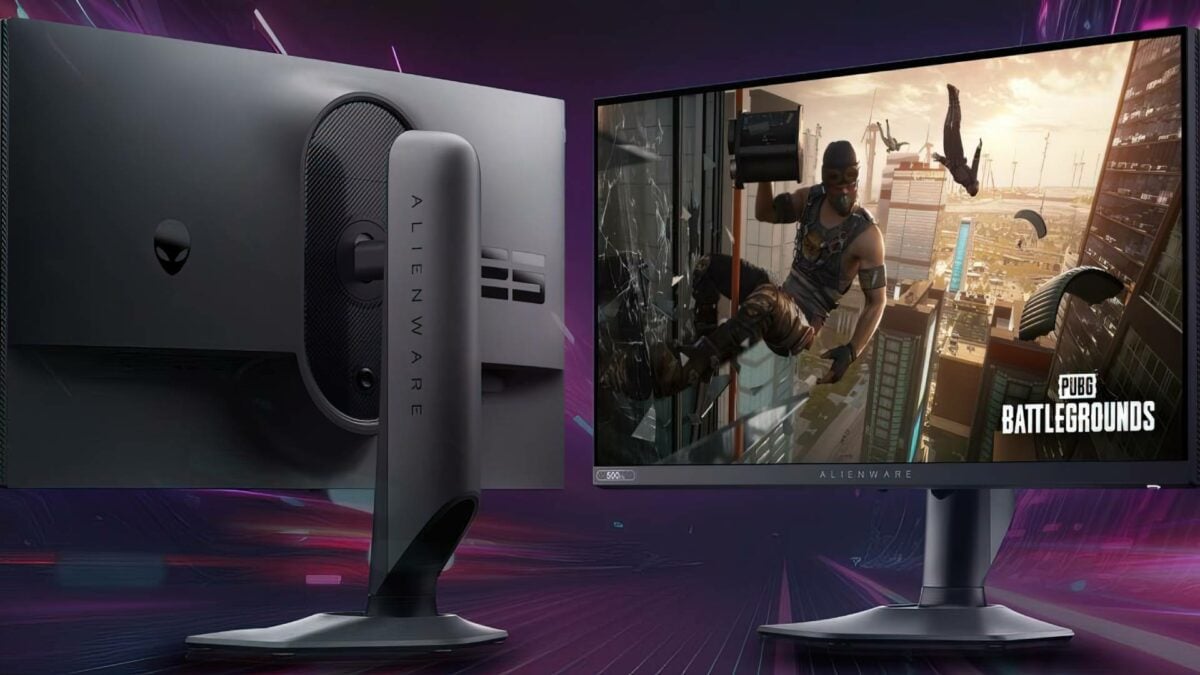
7. Alienware AW2524HF
The best gaming monitor for esports.
| Specs | |
|---|---|
| Resolution | Full HD (1920x1080p) |
| Panel size | 24.5 inch |
| Panel type | Fast IPS |
| Response time | 1ms (GtG) |
| Typical brightness | 400cd/m² |
| Features | 99% sRGB, headpdhone hanger |
| Connectivity | HDMI | DisplayPort | USB-C | USB 3.2 | Upstream |
| RRP / MSRP | £460 / $599.99 |
If you play a lot of competitive games and want high refresh rate at the expense of everything else, look no further than Alienware AW2524HF. It’s the company’s first-ever 500Hz gaming monitor, geared towards gamers who know that every millisecond counts. It’s not the biggest display at just 24.5 inches, nor does it have the highest resolution as it’s 1080p, but you won’t find a panel this fast anywhere else.
What’s more, Alienware AW2524HF is priced competitively at £480 directly through Dell. You may find it cheaper through other retailers such as Amazon and Ebuyer, where sales are more frequent. Its compact size is a plus is our book, considering it will be easier to transport if you plan on attending events or like sitting up close and personal to your gaming desk. Just because it’s 1080p doesn’t mean you’re missing out on clarity, as it’s rocking a fast-IPS panel, which easily ranks as the best LCD tech on the market.
Everything about the AW2524HF is function over form. It’s not the prettiest panel on the planet; you aren’t getting a luxuriously designed chassis here. However, what you will get is a leading response time of just 0.5ms with AMD FreeSync Premium to eradicate screen tearing completely. If you’re someone who plays the likes of Fortnite, CS2, The Finals, Overwatch 2, Dota 2, and other competitive releases then you may want to consider this one.
You can’t go wrong with 500Hz, as it’s one of the fastest refresh rates we’ve ever seen. That said, if speed is of the utmost importance to you, this isn’t actually the quickest. Asus ROG Swift Pro PG248QP sports a 540Hz panel, which is soon to be a bit more common (and cheaper) as AOC AGON Pro AG246FK is on the horizon for €699.
Pros
Leading 500Hz refresh rate
Excellent response time
Aggressive pricing
Cons
Limited to just 1080p
Basic build quality
Small display
Buy
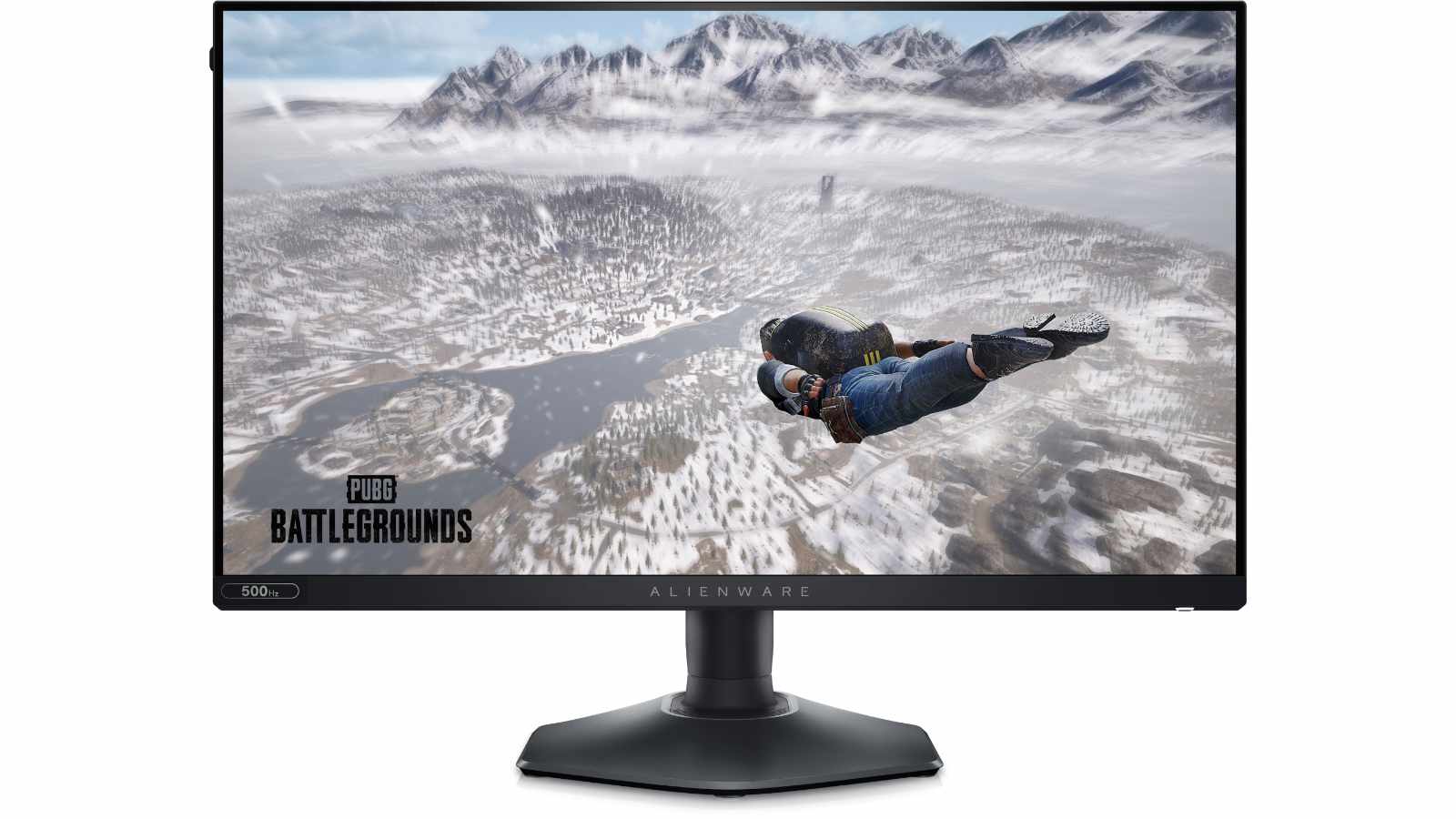
Club386 may earn an affiliate commission when you purchase products through links on our site. This helps keep our content free for all.
Rest assured, our buying advice will forever remain impartial and unbiased.
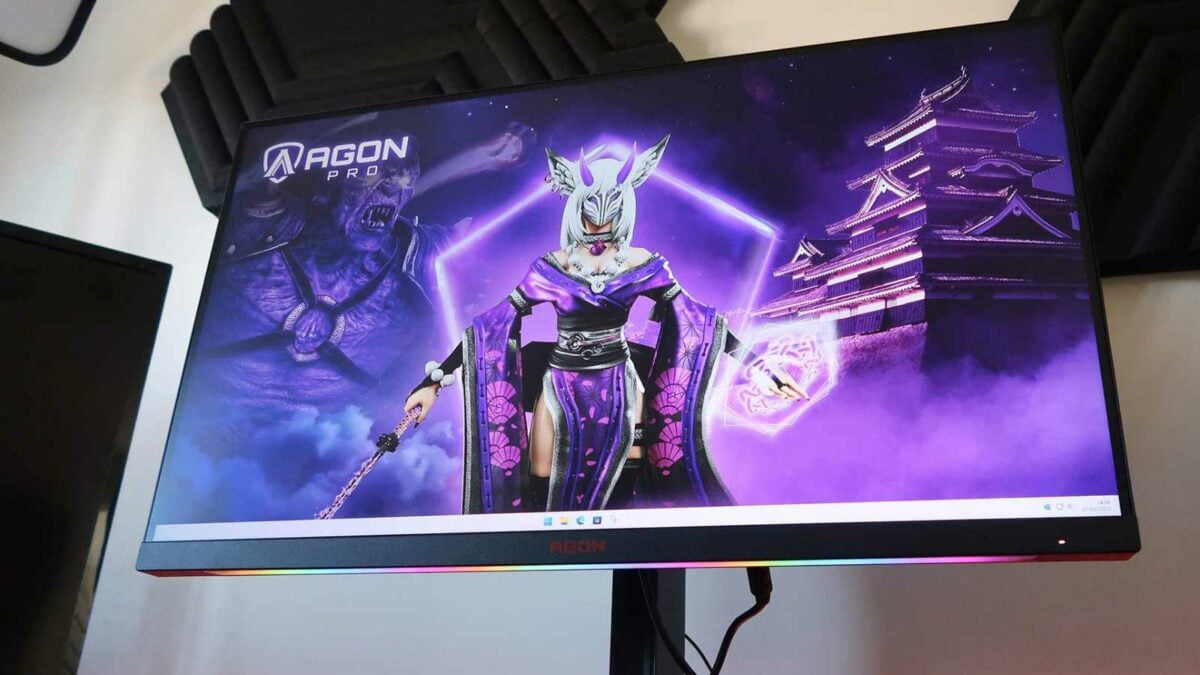
8. AOC Agon Pro AG324UX
The best gaming monitor for work and play.
| Specs | |
|---|---|
| Resolution | UHD (3840x2160p) |
| Panel size | 31.5 inch |
| Panel type | IPS |
| Response time | 1ms (GtG) |
| Typical brightness | 365cd/m² |
| Features | DisplayHD 400, KVM switch |
| Connectivity | HDMI | DisplayPort | USB-C | USB 3.2 | Upstream |
| RRP / MSRP | £898.99 |
Striking the perfect balance between work and play isn’t the easiest. OLEDs aren’t up to the task because of the risk of burn-in, so you need the pinnacle of IPS. That’s where AOC Agon Pro AG324UX comes in. Marrying 4K to 144Hz, it was among the first to give UHD resolution the triple-figure refresh rate treatment. To this day, it’s one of the fastest high-res LED panels without self-emitting pixels. Not only does this mean a brighter panel that works better in sunny rooms, but that persistent Windows taskbar isn’t going to cause issues.
Much like its sister company, Philips, AOC gets connectivity right. HDMI 2.1 pairs well with modern consoles like Xbox Series X and PS5, while a USB Type-C upstream lets you hook all your peripherals up via its KVM switch. The latter is already sorely lacking in most gaming monitors, but here you get four (instead of a meagre two) Type-A ports to plug in your gear. The dock also gives you 90W of charging to either use as a passthrough for your Steam Deck or juice up your laptop.
Naturally, it’s not a perfect showing. Despite a clear, responsive 4K image, the contrast and colour coverage leave something be desired. The on-screen display also needs work, but you won’t spend much time in there anyway. At £898.99 via OverclockersUK, it’s a lot of money, but comparatively undercuts most monitors at this spec and provides more than its fair share of work features.
Pros
144Hz adaptive sync
Responsive 4K
Connectivity and KVM
90W USB-C dock
Cons
Cluttered OSD
Middling contrast
Limited colour coverage
Pricey
Buy
Club386 may earn an affiliate commission when you purchase products through links on our site. This helps keep our content free for all.
Rest assured, our buying advice will forever remain impartial and unbiased.
Gaming monitor FAQs
Are OLED gaming monitors worth it?
Yes, we think that OLED gaming monitors are among the best on the market. They are head and shoulders above other panels when it comes to deep inky blacks and limitless colour contrast. However, that comes with higher price tags, lower peak brightness, and the potential risk of burn in.
Is IPS or OLED better for gaming?
While IPS is significantly cheaper, OLED panels are better for gaming. Not only does OLED sport superior image quality, it has faster response times and higher refresh rates because it’s no longer limited to a backlight.
Are Mini LED gaming monitors good for gaming?
While a reletively new technology, Mini LED displays are quickly becoming widely adopted by gaming monitor manufacturers for their superior brightness to OLED without the burn in risks. You may be an early adopter now but we expect the hardware will become more mainstream in the next handful of years as companies get to grips with what the tech can do.
What is the best resolution for a gaming monitor?
Generally speaking, we recommend that most people should play games in 1440p as Quad HD offers the fine balance between visual clarity and fidelity. Even mid-range graphics cards able to keep up more often than not. With that said, top-end video cards such as RTX 4090 or AMD RX 7900 XTX can push native 4K gaming. Budget builds will be most comfortable on a 1080p panel as it doesn’t push weaker hardware as much.

